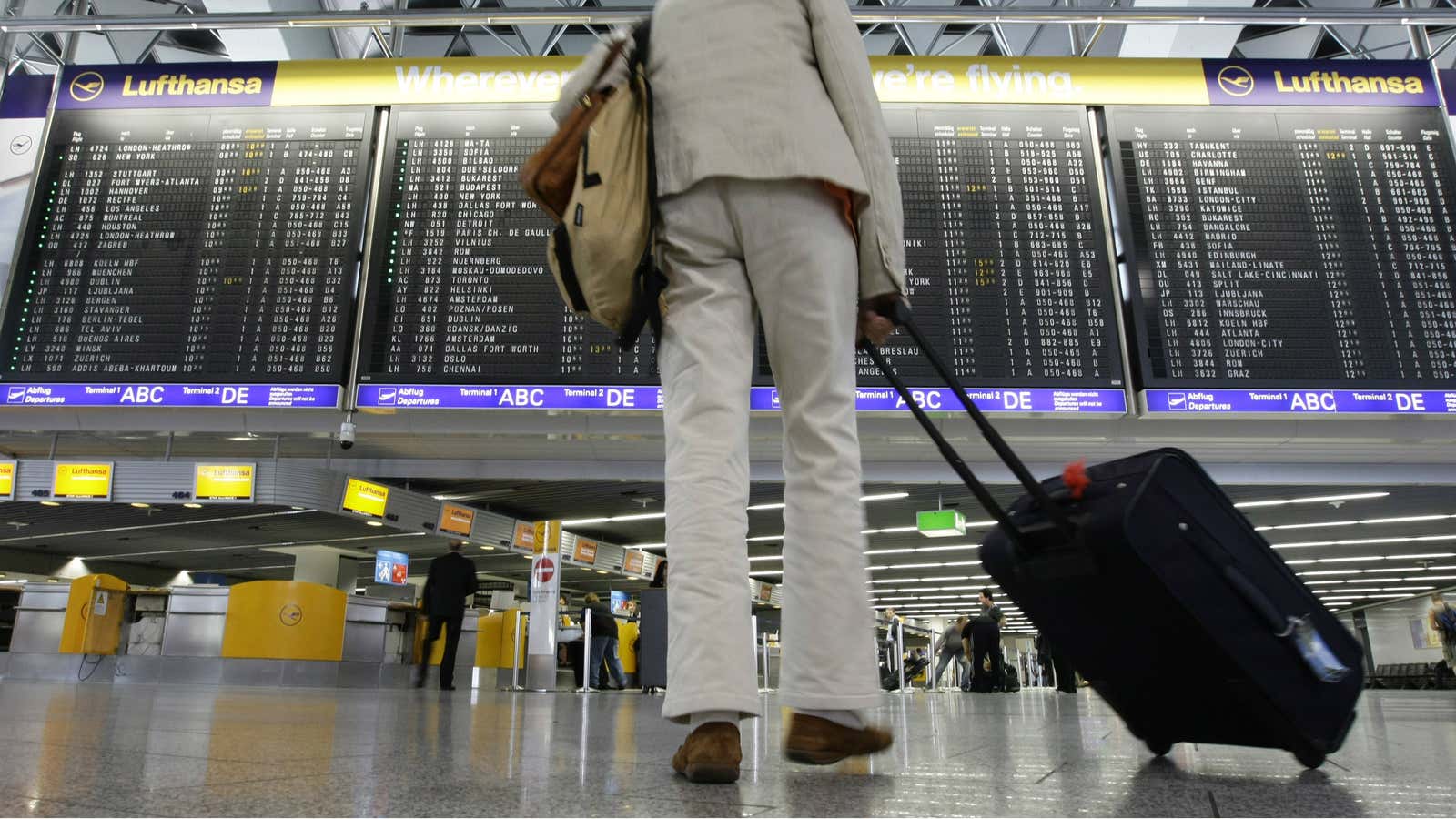It started with a trickle: In late August, JetBlue announced it would up its first checked bag fee by $5, to $30. Then came the cascade: Within a month, United, Delta, and American Airlines all followed suit. No doubt some passengers have responded with an increase of their own, in the amount they’re stuffing into carry-on bags to avoid checked-bag fees.
As airlines get more stringent with their policies on baggage, whether on domestic flights or international bookings, a question is raised: Why don’t airlines apply the same level of scrutiny when it comes to the weight of our carry-ons?
Indeed it is more often size, rather than weight, that matters—even though both bag dimensions and a maximum weight are commonly listed on airline websites (usually around 23-26 lbs or 10-12 kgs). But while it makes sense that airlines would want to prevent oversized bags that don’t fit in overhead bins, wouldn’t they also want to proactively prevent the overstuffing that has come as a direct result of charging for checked luggage?
The main reason they don’t scrutinize weight for carry-on bags is that they don’t need to. Per Skift:
When engineers design a plane, they make intricate calculations about the weight of passengers and the bags that they may bring on board….An aircraft manufacturer might assume each passenger weighs an average 195 pounds, and brings 75 pounds of luggage – 50 pounds in a checked suitcase, 25 pounds in a carry on. Some will bring heavier bags, and others none at all.
But there’s another good reason to give passengers a pass on heavy carry-ons. Once unthinkable, checked baggage fees are a huge revenue maker for airlines and a helpful buffer against rising fuel prices. But because they were implemented over time—American Airlines implemented the first checked bag fee in 2008, for $15—passengers were able to acclimate slowly, albeit begrudgingly. To begin weighing or charging for heavier carry-ons would be a comparatively seismic shift, one that would come with a backlash the industry isn’t quite ready for.
As Aviation Week columnist Richard Aboulafia tells Quartz, “The airlines do worry about customer perception, and weighing carry-on bags is generally more trouble than it’s worth, especially since the bags just aren’t that big [and] weighing them would need to take place at exactly the worst moment”—i.e. at the gate, which could slow boarding—”and this is a good place for arguments with customers, always something to be avoided.”
There is one exception to the general lack of weight consciousness: low-cost, long-haul carriers. Norwegian Air, for example, is known to weigh passengers’ carry-ons. (I once was told at JFK my personal item and my carry-on had to fall under the weight limit, which led to an embarrassing decanting of half my belongings into the tote of a colleague, who had checked a bag.) Then again, if they’re offering to fly you transatlantic for less than $400, one can’t expect much in the way of frills.
On that theme, it’s important to note that although air travel has gotten ever more stingy, it’s simultaneously gotten cheaper and more efficient. As prominent airline industry blogger Gary Leff points out, the total cost of air travel—inclusive of fees—has declined since the first checked-bag fees were introduced a decade ago.
